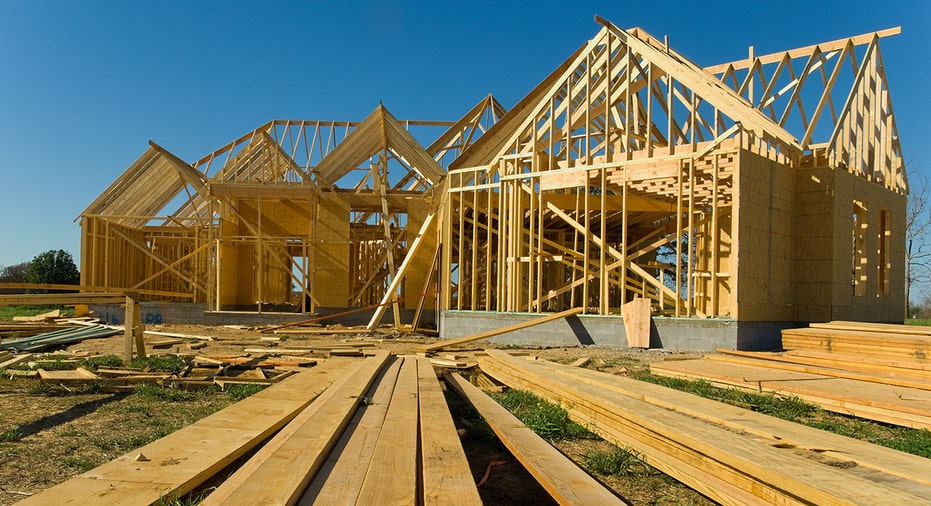US consumer confidence rebounds; new home sales rise

New home being built with wood plank, trusses and assorted supplies
WASHINGTON (Reuters) - U.S. consumer confidence rebounded in April and new home sales increased more than expected in March, pointing to underlying strength in the economy despite signs that growth slowed in the first quarter.
Other data on Tuesday also showed house prices increasing solidly in February. Strong consumerconfidence and rising house prices bode well for an acceleration in consumer spending in the second quarter after it braked sharply at the start of the year.
The Conference Board said its consumer confidence index increased to a reading of 128.7 this month from 127.0 in March. Consumers' short-term expectations also improved, with the share ofconsumers expecting their incomes to decline over the coming months reaching its lowest level since December 2000.
U.S. financial markets were little moved by the data.
In a separate report, the Commerce Department said new home sales increased 4.0 percent to a seasonally adjusted annual rate of 694,000 units last month. February's sales pace was revised up to 667,000 units from the previously reported 618,000 units.
Data for January was also revised to show sales unchanged instead of declining 4.7 percent. Economists polled by Reuters had forecast new home sales, which account for 11 percent of housing market sales, rising 1.9 percent to a pace of 630,000 units last month.
New home sales are drawn from permits and tend to be volatile on a month-to-month basis. They jumped 8.8 percent from a year ago.
March's surge in new home sales and upward revisions to January and February sales data will probably not change economists' expectations that residential investment declined in the first quarter.
Gross domestic product estimates for the first quarter are below a 2 percent annualized rate. The economy grew at a 2.9 percent rate in the fourth quarter.
CHRONIC SHORTAGE
The housing market is struggling with a chronic shortage of properties that is boosting home prices and weighing on sales at the lower end of the market.
Rising mortgage rates and moderate wage growth are also making home purchasing less affordable, especially for first-time buyers who account for less than a third of transactions.
Sales in the West soared 28.3 percent to their highest level since December 2006. They rose 0.8 percent in the South, which accounts for the bulk of new home sales. Sales plunged 54.8 percent in the Northeast and dropped 2.4 percent in the Midwest.
The median new house price increased 4.8 percent to $337,200 in March from a year ago. Last month, there were 301,000 new homes on the market, unchanged from February.
At March's sales pace it would take 5.2 months to clear the supply of houses on the market, down from 5.4 months in February. About two-thirds of the houses sold last month were either under construction or yet to be built.
Another report on Tuesday showed the S&P CoreLogic Case-Shiller composite index of home prices in 20 metropolitan areas increased 6.8 percent in the 12 months to February after rising 6.4 percent in January.
(Reporting by Lucia Mutikani; Editing by Paul Simao)



















